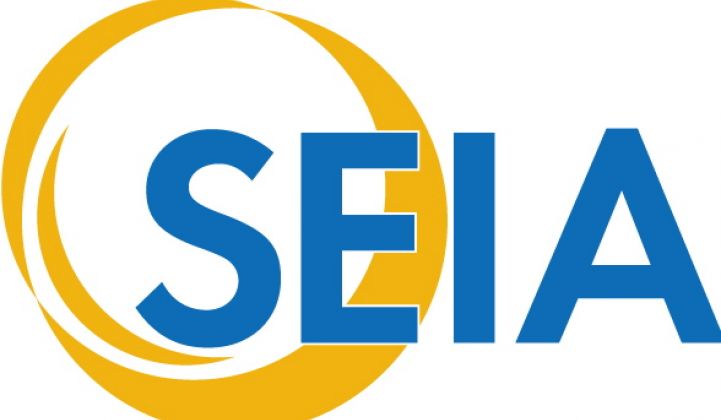There has been a lot of dialogue on this site about the future of solar financing and the tax treatment of various solar financing scenarios, and we at the Solar Energy Industries Association hope to contribute additional clarity to that discussion.
As an industry, we must remain mindful of the applicable tax laws, statutory and regulatory requirements that govern key solar incentive programs such as the Section 48 commercial solar investment tax credit (“ITC”) and the Section 1603 Treasury Program (“1603”). SEIA is hosting a webinar on Wednesday, September 5, 2012, at 1:00 p.m. ET during which leading tax experts will provide an overview of the compliance rules that govern these key programs. Registration is free for any company in the solar industry.
The tax rules that govern equipment financing are not new, but they may not be familiar to everyone in the solar industry. Equipment leases and similar instruments account for approximately $628 billion of business each year -- more than half of all U.S. business investment in capital goods and software -- but they are still relatively new to the solar rooftop market.
Tax Equity
Most solar developers can’t fully use the tax benefits provided to solar projects, and often barter them to institutional buyers in return for capital investment -- called “tax equity” -- which they can then use to cover the capital cost of their projects. The tax equity investor can claim a tax credit for 30 percent of the purchase price it pays for the system. In many instances, basis for the ITC or 1603 award is calculated on what the IRS terms the fair market value of the project. Tax equity investors usually insist that the fair market value be confirmed by an independent appraisal, and an appraisal is required under 1603.
Fair Market Value
The IRS recognizes three approaches for determining the fair market value of an asset regardless of asset type: income, market, and cost. The IRS applies these approaches across a broad set of property categories.
The income approach assigns a value to a project based on the income generated by the asset. (In the case of a solar project that has been leased to a customer or is subject to a PPA to sell the electricity to a customer, the value would take into account the total lease or PPA payments provided per the contract, along with any other tax and cash incentives that will be received by the owner, each discounted to reflect the net present value of such items.) The income approach is commonly used in valuing rental properties.
The market approach analyzes recent sales of comparable projects -- like Kelley Blue Book, to borrow an example -- and analyzes their differences to arrive at an adjusted value.
The cost approach would normally be used for new assets that someone has built himself or herself and for which there is no comparable sales data. It basically looks at the costs of building the project and adds a profit margin. The underlying assumption is that a buyer would pay no more for the property than the cost of producing another identical property.
In the context of the 1603 program, the Treasury Department has indicated in public guidance that it favors a cost approach to determining fair market value, but this is not a hard-and-fast rule. The Treasury Department provided its only public guidance on solar fair market values in July 2011, indicating that $7/ DC watt for residential projects under 10 kW, and $4/DC watt for systems larger than one megawatt should be used as the benchmarks at that time. According to SEIA’s Solar Market Insight, system costs have decreased significantly in the last year, so companies should check with Treasury officials to get their latest guidance.
Regardless of the financial structure used, studies have suggested that the government gets back more than the amount of the tax credit or Treasury cash grant in cases where solar systems are leased or the electricity is sold under a PPA. The government collects income taxes on the rents or electricity payments, unlike where systems are owned by customers directly.
The ITC is the most significant financial incentive available to the industry to continue to work toward parity with polluting power sources. Equipment financing has leveraged the ITC to bring billions of dollars in private investment to solar, and to make it accessible to more types of customers. The tax rules that govern equipment financing have been in place for decades, and it’s absolutely crucial that we continue to comply with them as an industry. We’ll explore these rules in much greater detail in Wednesday’s webinar, and we hope you can join us.



